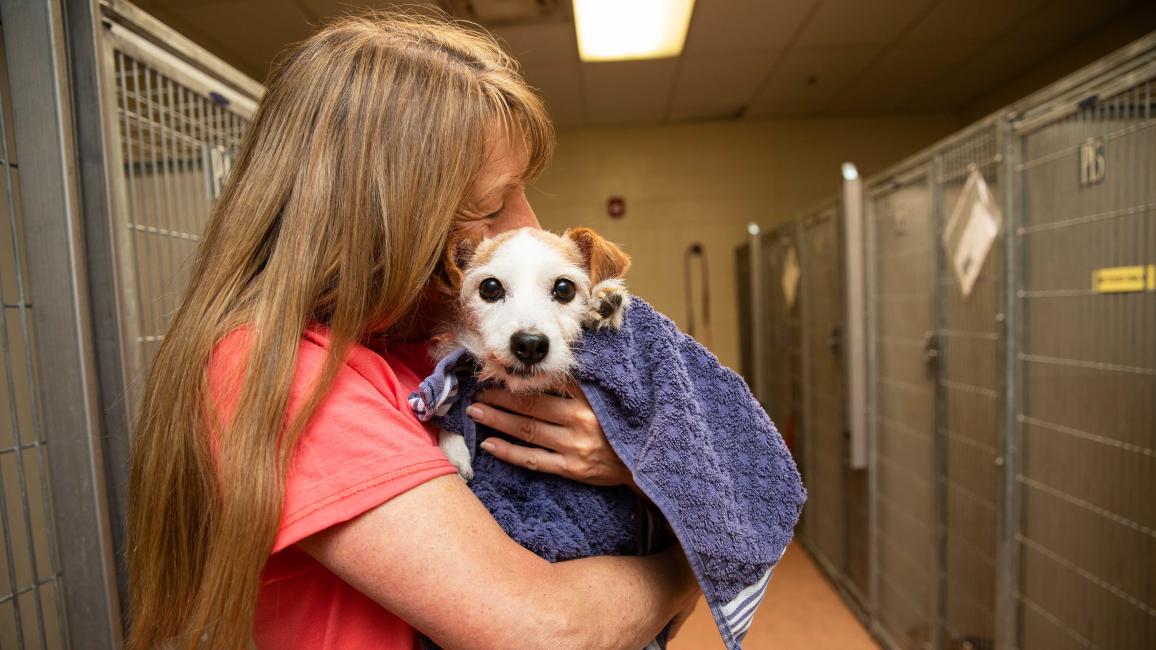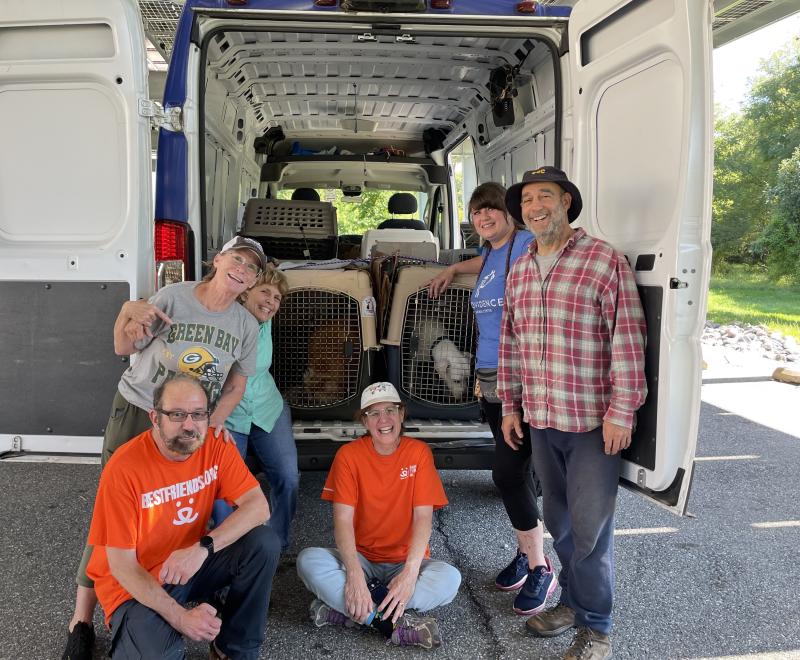Best Friends volunteers help in animal shelters

They’re trained, they’re prepared, they’re ready to help when called to take care of animals in an emergency. Best Friends emergency response volunteers have robust training in cleaning and sanitation, disease prevention, safe animal handling, animal sheltering, and many other key skills needed after a hurricane, flood, fire, or other disaster that impacts pets. And recently, they’ve kept their skills sharp by assisting with the daily emergencies facing animal shelters.
“There’s a tremendous staffing shortage across the country, and animal shelters are dealing with it on an unprecedented level,” says Sharon Hawa, Best Friends emergency services senior manager. “They’re facing disaster every day on top of other things that can happen, like hoarding or dogfighting cases or distemper outbreaks.”
Meanwhile, Best Friends has a team of over 100 volunteers with extensive training ready and willing to go. So, in weeklong shifts, folks are deploying alongside Best Friends staff to assist shelters. They do whatever is needed, whether it’s cleaning, feeding, walking dogs, spending time with the animals, or helping with adoptions and dog play groups.
[Natural Disaster Preparedness for Families with Pets]
Though the work can be difficult, it’s also rewarding. Some volunteers have signed up for multiple weeklong stints in various shelters, and people come away from the experience with renewed inspiration to help their shelters back home. After all, that’s how communities have already reached no-kill: by people taking one step, and then another, to help.
Ready to take the first step? Get involved in saving lives by signing up to volunteer.
This article was originally published in the January/February 2024 issue of Best Friends magazine. Want more good news? Become a member and get stories like this six times a year.
Let's make every shelter and every community no-kill by 2025
Our goal at Best Friends is to support all animal shelters in the U.S. in reaching no-kill by 2025. No-kill means saving every dog and cat in a shelter who can be saved, accounting for community safety and good quality of life for pets.
Shelter staff can’t do it alone. Saving animals in shelters is everyone’s responsibility, and it takes support and participation from the community. No-kill is possible when we work together thoughtfully, honestly, and collaboratively.







